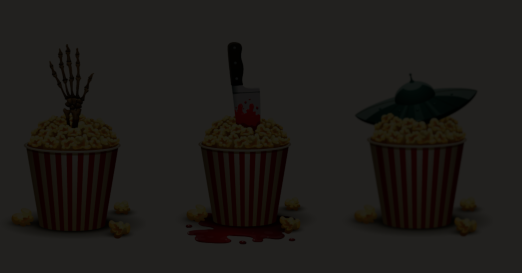


The Brides of Dracula is a 1960 British horror film directed by Terence Fisher and acts as a sequel to the 1958 film Dracula. For some reason, it is the first Hammer Horror film we’ve ever reviewed on Mashers Club / Readers Digested. I’ve wanted to review Hammer Horror films for a while now, but I’ve always refrained from it for some reason or another. A lot of it has to deal with convenience, or lack thereof. For instance, while I was able to easily purchase a collection of Universal Horror movies on a whim, the same couldn’t be said for finding a Hammer Horror collection with a lot of the box-sets restricted to Region B, whereas all of my Blu-Ray and DVD players are Region A. While, obviously, there’s other ways to watch them, I wanted to be able to watch them all in a more comfortable, casual-setting, and, really, the best way for that, for me, is to own a physical copy or find it on a streaming service.
The Brides of Dracula is a peculiar film. The film begins with a woman named Marianne Danielle, a young French schoolteacher en route to Transylvania, but is thrown off course when her coach driver abandons her at the village inn. Despite the many warnings from the locals, she decides to spend a night at Baroness Meinster‘s castle. It is there she meets the Baroness’s son, an attractive man who appear pleasant, Marianne is troubled to discover the young man is chained to the wall, imprisoned by his mother, who she claims is insane. As you might predict, Marianne’s skepticism finds the better of her and compels her to steal the key from the Baroness’ bedroom, freeing her son; a vampire. Peter Cushing reprises his role as Doctor Van Helsing, arguably the actor most commonly associated with Hammer Horror.
The other reason I haven’t reviewed Hammer Horror films is because I’ve been apprehensive about sharing my opinion on them in-general. I wouldn’t say I’m afraid to criticism them. Hammer Horror no doubt has its devout supporters and I most certainly don’t want to offend them, but that isn’t to say I wont offend them if I feel its my opinion and I feel its rightful. Instead, I find myself unenthusiastic when said criticisms arise. I find when I review horror fare, particularly from the 1960s or earlier, the biggest criticism I have involve stilted acting or general lack of new, unique ideas. This isn’t always a fair criticism, depending on how far back you go. Eventually, you find yourself criticizing a film for cliches or tropes when, in-fact, they’re the trendsetters.
The Brides of Dracula isn’t that film. The Universal Monster movies have come and went, and Hammer already has a Dracula film under its belt.
The Brides of Dracula prospers on a technical front. The classical and expected sound, in this film, it’s drawn from Malcolm Williamson, a name that feels meant to conduct an orchestra. It’s skillful and menacing, an it’s about everything you’d want from a Dracula film. However, it isn’t what I’d call distinct or memorable beyond that. It is something I would say becomes lost in the shuffle when compiled with the rest of the genre’s cinematic scores.
The acting is par for the course, and is, like I prefaced, in dire need of personality, aside from Peter Cushing, who does exactly what I’m criticizing, but has his serious-face down to such a science that I knew he played Sherlock Holmes in a movie at some point in his life before I knew he played Sherlock Homes in a movie at some point in his life. The actor who plays our vampire is blond. I’m sorry – but I broke out in laughter when I saw him in the Dracula getup and the silly teeth. When I researched this film, I read a review that said it would have been much “scarier in black-and-white,” and I chalked it off as narrow-minded. Like when silent film aficionados called “talkies” a passing trend. However, after watching the film, I don’t think it’d ever have been scary, … but I don’t think I would have laughed in the face of the film’s antagonist had it been in black-and-white.
In all honesty, The Brides of Dracula is formulaic and safe, straddling established convention and vampire myths like a security-blanket. It adds no nuances to the Dracula legend, no unique characters or interesting ideas, and is an unfortunate misfire to kick-off our traversal into the Hammer Horror brand.

